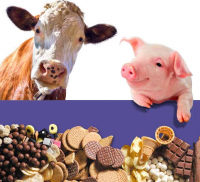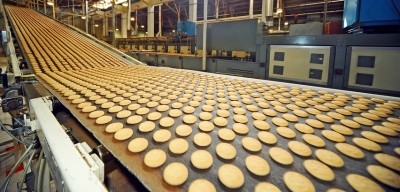Feed safety high on the agenda at Brussels workshop on former foodstuffs
Managing risk when using surplus food in feed: industry weighs up options

“This was our first ever EU high level workshop. It was well attended and very informative. There were about 70 people present,” said Paul Featherstone, president of the EU Former Foodstuff Processors Association (EFFPA), and group director of SugaRich, a UK wide surplus food processing operation.
The audience included enforcement authorities, EU Commission and DG Santé representatives, along with members of the national governments of Bulgaria, Romania and Belgium, NGOs and feed and food business stakeholders who wanted to learn more about such by-products, how to manage risk around them, and their potential to boost the circular economy, he said.
“There is still a lot of mystique around former foodstuffs. We were asked questions about what they consist of, and what can be done with them. Of course, former foodstuffs are not the silver bullet – we can’t recover meat-based products. We are not the answer to sausages, pies and meat pastries recovery," he continued.
Former foodstuffs used in feed in Europe are of plant origin. The materials are removed from the retail market due to unintentional or unavoidable production errors. Typically, they include broken biscuits and chocolates, surplus bread, incorrectly flavoured crisps and breakfast cereals.
Their benefits in feed derived from their high-energy content in the form of sugars, oils and starch.
The EU piglet market is said to be a significant user of such feed - the sweet taste helps with weaning – and the cattle sector also benefits. The industry was valued at around €1bn in 2014.
Speakers at the workshop, he said, stressed the importance of maintaining feed safety at all costs.
Others on the panel talked about how innovative processing technology and sourcing capacities, more efficient safety assurance scheme auditing procedures and a streamlining of the regulatory interface between food and feed production could further stimulate the processing of former foodstuffs into feed.
Risk management
“We have to be mindful of novel risks. We don’t want to be increasing the risk in the feed chain through the use of by-products.
“As the Commission said, during the meeting, safe food production leads to safe feed production.
“But sometimes safe for food might not be safe for feed. Ruminant gels in confectionery, for example, can’t be used in feed due to the TSE regulation and banning of ruminant by-products in the feed chain," said Featherstone.

He said the sector does have a third party, independent, feed assurance scheme that polices the legislative platform.
“However, even with that, we need to be constantly evaluating the challenges we are facing, the emerging risks; fortunately we have established a good working relationship with the regulators, the policy makers in the Commission."
The Commission, he said, is in the process of taking the feed hygiene regulation and distilling it down into its essentials to help stakeholders in the food manufacturing industry and the former foodstuffs processing sector ensure the by-products are compliant with feed safety legislation.
"In terms of the Commission’s forthcoming guidance document, which is still in the drafting phase, we don’t want there to be an extra step needed, an additional check, in order to make a foodstuff feed compliant. Because, in that case, the foodstuff may instead end up going to waste streams rather than feed. We don’t need the guidance to make things overly complicated. We are in talks with FoodDrinkEurope and the European Dairy Association (EDA), whose members produce milk powder that is used in dairy calf and piglet nutrition, on this.”
The EFFPA has also been working with the BRC on compliance. Last July, as part of its global standards on food safety, the BRC introduced a module to enable food manufacturers demonstrate to their animal feed customers that the products supplied for use as feed materials meet legal requirements. “The BRC spoke about the module at the workshop,” said Featherstone.
Packaging residues
As well as pre-consumer foodstuffs, the sector sources products that had been made retail ready from factories, but were deemed off spec, or packaged goods from retailers and distribution networks that no longer complied with shelf life requirements or were in in seasonal wrapping and so control of packaging residues is on the sector's radar:
“We are currently evaluating optical sorting technology that can show up bright colors and the reflective properties of metalite packaging to screen for any packaging residues, it is a bit like the technology used to check for discoloration of product in a chip or crisp factory,” said Featherstone.
Room to expand
The profile of the former foodstuffs processing sector within both the food and feed industries has been elevated in the past few years, through awareness raising, he said.
However, there is still plenty of room for the sector to innovate and grow, he added.
In terms of sourcing, the supermarket and distribution side has yet to fully explored, and the former foodstuffs processing sector has a way to go before reaching maturity in the newer European member states, said Featherstone.
EFFPA estimates approximately 3.5m tons of former foodstuffs annually are processed into animal feed in the EU. “That can jump to 6.5 or 7m tons by 2025,” he said.







